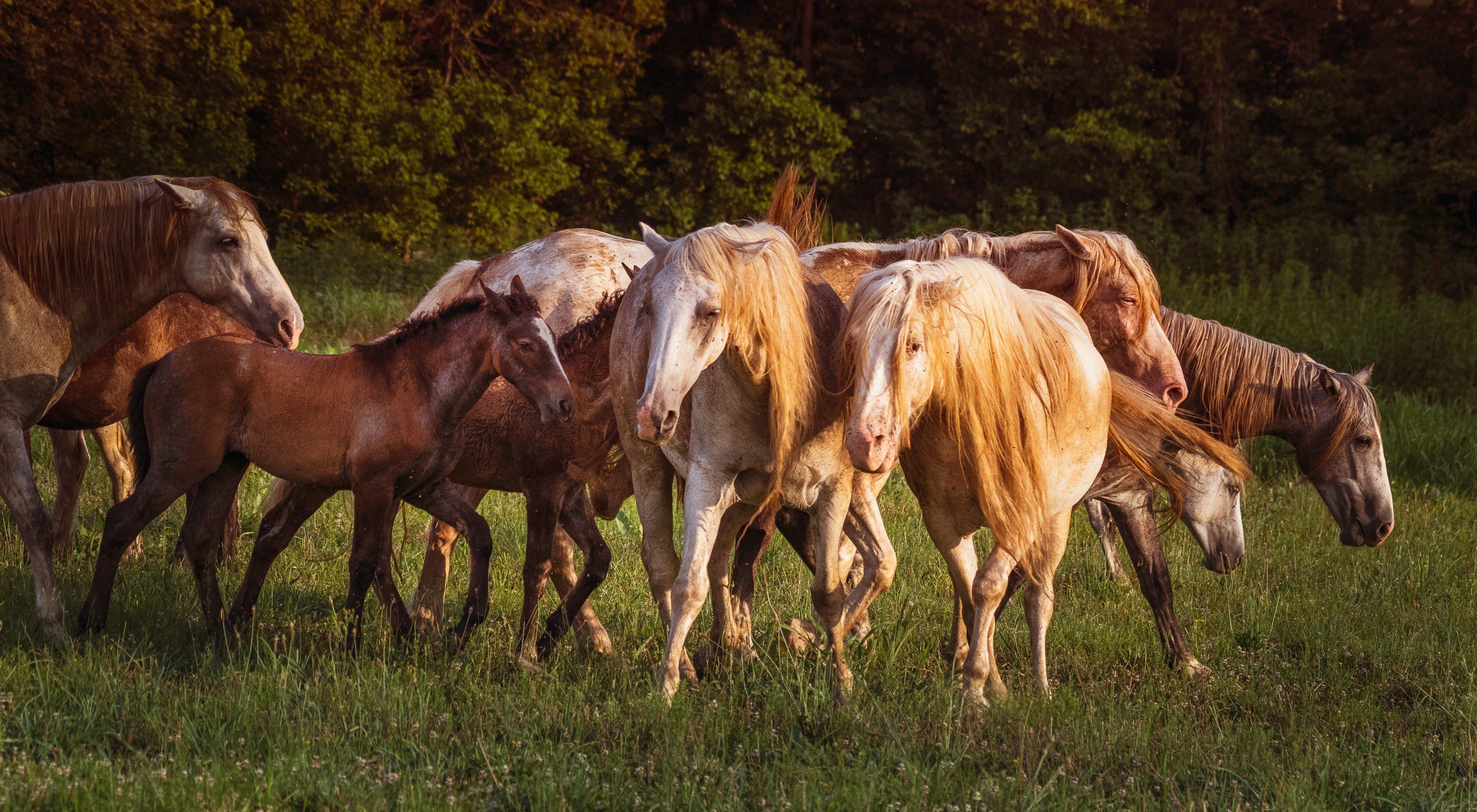A few hours’ drive from my home is a field deep in the Missouri Ozarks. The field is quiet and secluded, tucked back at the end of a series of dirt roads. But if you stumble across this particular field, you might get a surprise: the thundering sound of wild horses.
The wild horses of Shannon County, Missouri, are technically “feral” rather than wild. Their ancestors were likely domesticated animals turned loose during the economic difficulties of the Great Depression. Today, the horses run free in the fields and forests of the Ozark National Scenic Riverways.
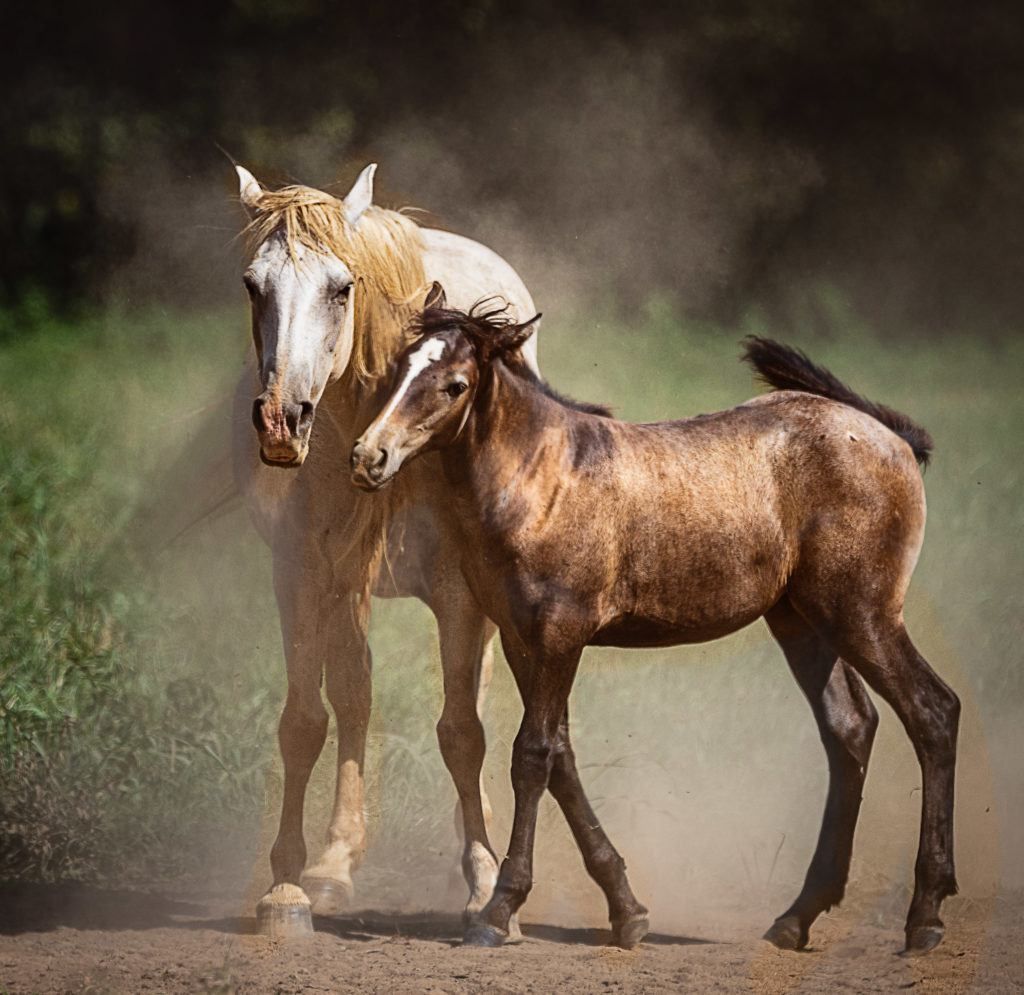
Photograph by Jenn Mishra
I’ve spent many hours photographing the horses and guiding other photographers to this magical place. We photograph the horses as they are. We come to share their world.
This article will help you find and photograph wild horses, or even domesticated ones. Many of the lessons in this guide apply to photographing other animals in the wild, but here I’ll focus on wild horses.
What we’ll cover:
- Locating wild horses
- The best equipment for photographing wild horses
- How to be safe when photographing wild horses
- The best times to photograph wild horses
- The best camera settings for photographing wild horses
- Anticipating horses’ behaviors
- Getting variety in your photographs
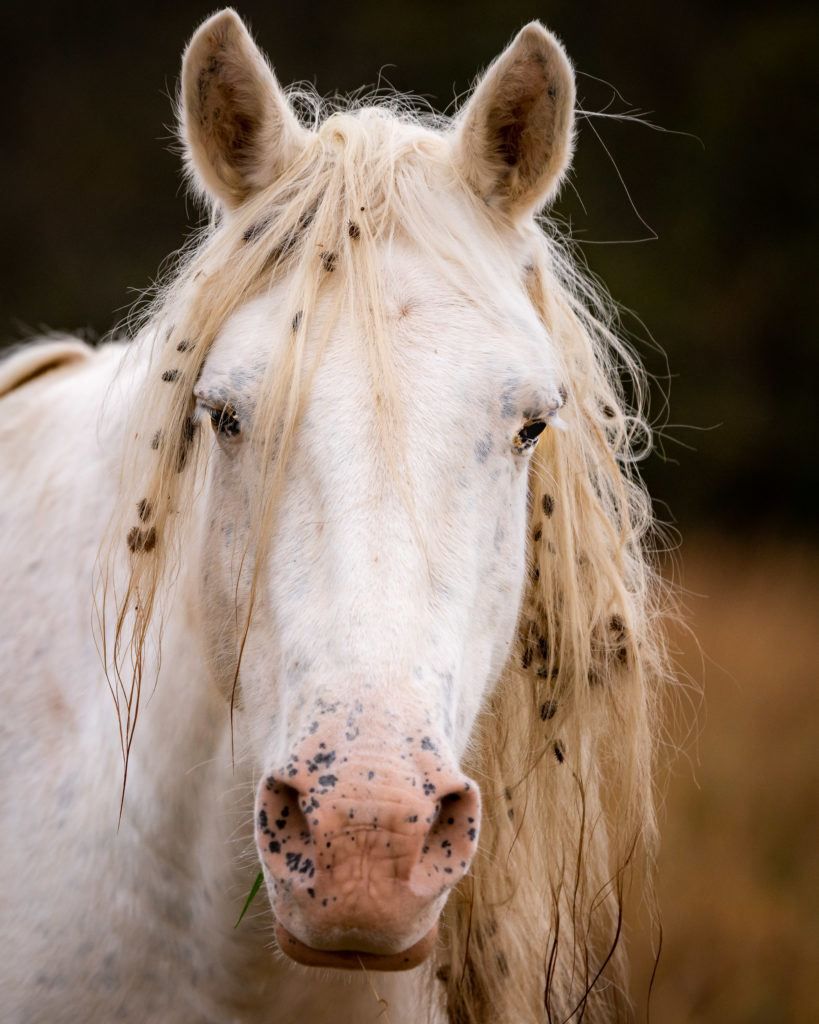
Add variety to your wild horse photographs by getting detailed close-ups as well as photographing the entire animal. Photograph by Jenn Mishra
Recommended Reading: Want a simple way to learn and master photography on the go? Grab our set of 44 printable Snap Cards for reference when you’re out shooting. They cover camera settings, camera techniques, and so much more. Check it out here.
Locating Wild Horses
I was initially surprised to find herds of wild horses near my home. I somehow assumed horses had been fully domesticated. But there are many herds of wild or feral horses around the world, including herds in North Carolina, Colorado, Nevada, Wyoming, and Nova Scotia.
There are also herds of semi-feral horses that appear to be wild. They live on non-fenced land or ranches so large that the barrier seems far away. These animals have an owner but are allowed to roam relatively freely.
I’ve included a list of some resources at the end of this guide to help you research whether there are wild or feral horses near you.
The wild horses are, by definition, wild. They go where they want. Finding the horses is not as certain as going to the zoo or a theme park. Finding wildlife you want to photograph requires research.
Because these animals roam, you will need to find out where their favorite places are and if they migrate with the seasons. The wild horses of Shannon County tend to stay fairly local, but that doesn’t mean that they are always standing in one particular field.
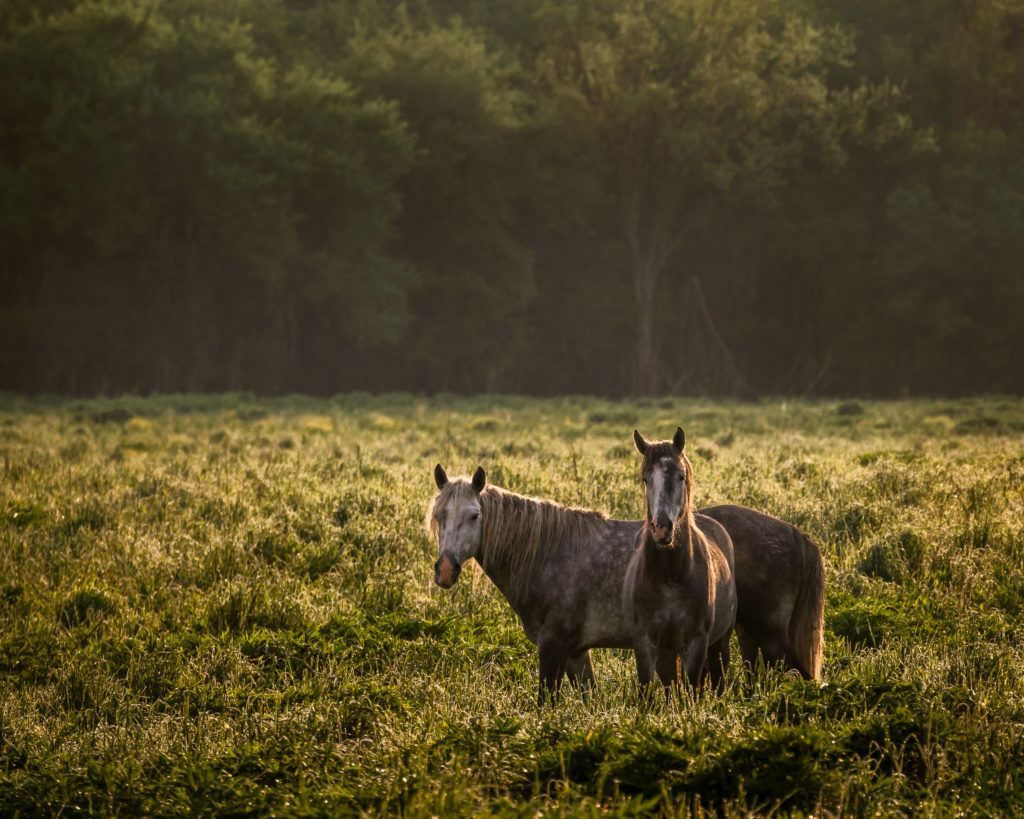
Sometimes the horses aren’t exactly where you expect them to be. Photograph by Jenn Mishra
Key Lesson: Local guides will know the wild horses’ likely movements.
When I can’t find the wild horses in their favorite places, I talk to a park ranger or a local. They can sometimes point me to an alternate location. I’ve found out over the years where the horses might be. If not there, I’ve learned where to look next. I’ve learned where the horses like to winter and where they may go on a hot summer’s day.
Finding wildlife you want to photograph requires research.
Having a local guide is invaluable. Your guide will know the likely places to find the horses; places that probably aren’t marked on any map. The guides know the horses’ tendencies and movements throughout the day.
Photography Equipment
Wildlife photographers benefit from having specialized photography equipment. You don’t have to have this equipment to take photos of wild horses, but certain gear will help you get successful images.
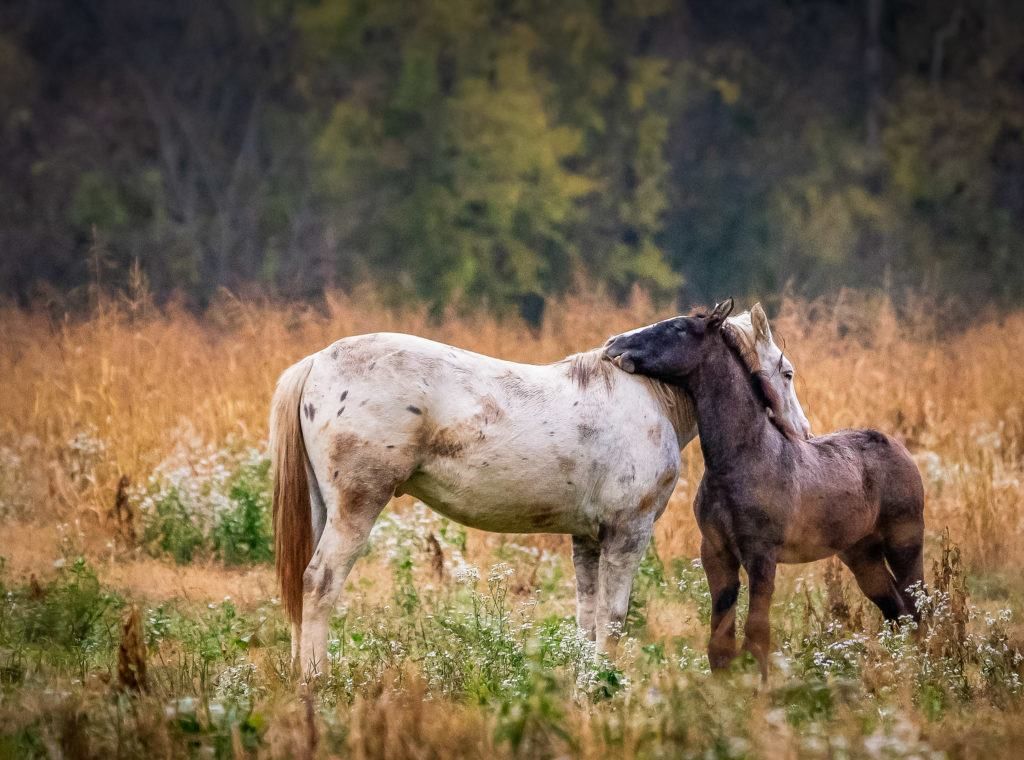
This image was taken at 400mm. A long telephoto lens will compress the background, making the field seem smaller. Photograph by Jenn Mishra
You’ll want a camera that can focus fast and can take at least 10 frames per second in burst mode. Low-light ISO performance is also important as the horses tend to be more active at dusk and dawn.
You won’t necessarily be able to get physically close to the wild horses. A long telephoto lens allows you to get visually close from a safe distance. Popular wildlife lenses are 70-200mm and 100-400mm. Many wildlife photographers shoot with even longer lenses such as 600mm.
Wildlife photographers extend their reach with teleconverters. Teleconverters generally come in 1.4x or 2.0x. My 1.4x teleconverter extends the reach of my 100-400mm lens to 560mm.
Don’t expect these lenses to be light and compact. Long telephotos have some heft to them! This makes a tripod or monopod a necessity. There is generally some hiking involved in finding wild horses and you may be standing in a field for hours, so choose a lightweight option.
Finally, if you plan to do a lot of wildlife photography, invest in fast memory cards. I didn’t pay attention to memory cards until I started photographing wildlife. My slower cards didn’t write fast enough. I’d take a burst of shots, and then I’d have to wait for the buffer to clear. It’s no good if you buy a camera that can take 10+ frames per second if your SD card can’t handle the speed.
Key Lesson: A quick camera and telephoto lens will help you get successful photographs of wildlife.
Safety Concerns
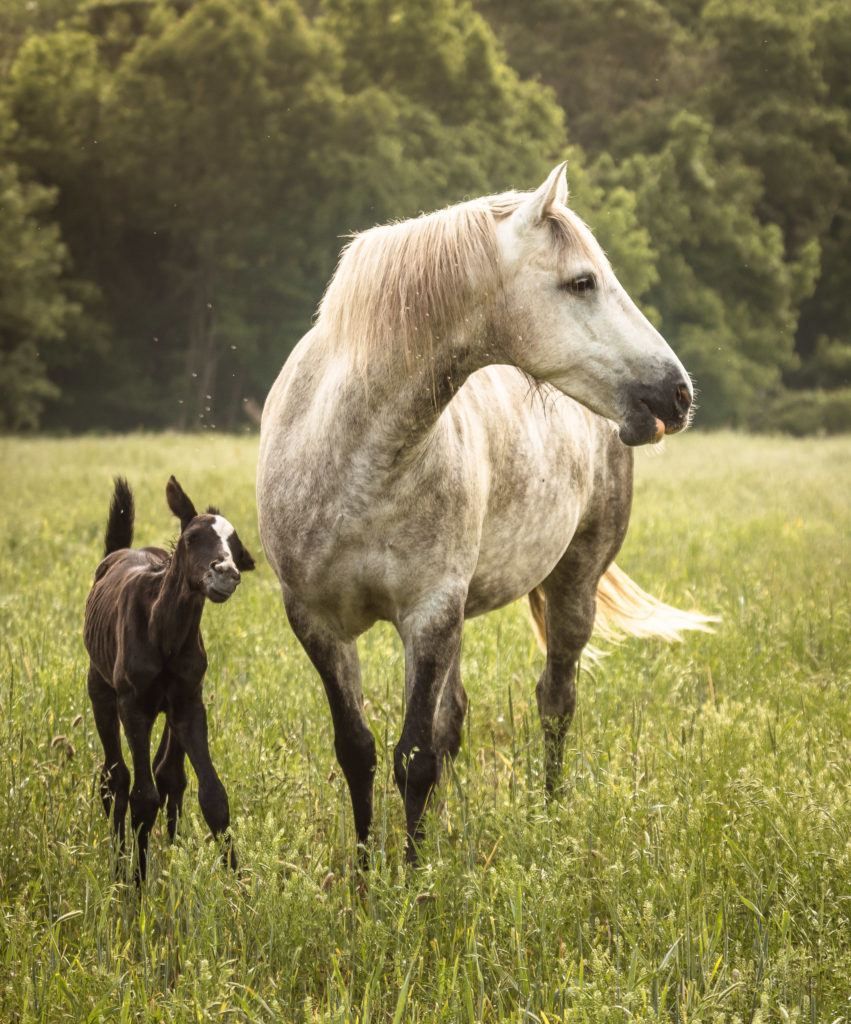
The horses may be particularly skittish if there are young foals to protect. Photograph by Jenn Mishra
There are a few safety concerns to cover before I continue.
You may be looking for wild horses, but you may also find insects, snakes, or other dangerous plants or creatures in the field. Finding the horses may mean being off the beaten track. It’s important to keep track of where you are and how you entered a field.
It’s important to respect the animals’ space, too. There are stories every year of people being gored by elk or trampled by elephants. In our excitement, we can get too close and spook the animals. The animals may be exceptionally aggressive during the breeding season and protective of foals.
Finding the horses may mean being off the beaten track. It’s important to keep track of where you are and how you entered a field.
Some herds seem like a lot of people and are friendlier than others. Don’t mistake their friendliness and curiosity for tameness. If a horse approaches you, stand very still and be quiet. Try not to spook it. The horse’s behavior may be unpredictable and could lead to injury. Let the horse have a sniff and eventually, the horse will move away.
Always remember that these are wild horses. They aren’t zoo or farm animals that are used to people. The horses will likely run away if you get too close. Make sure you are not between them and their point of exit if they start to run. Never position yourself in the middle of a herd.
Key Lesson: Be aware of how close you are to the animals. Keep a safe distance and allow the animals to move freely.
When to Photograph
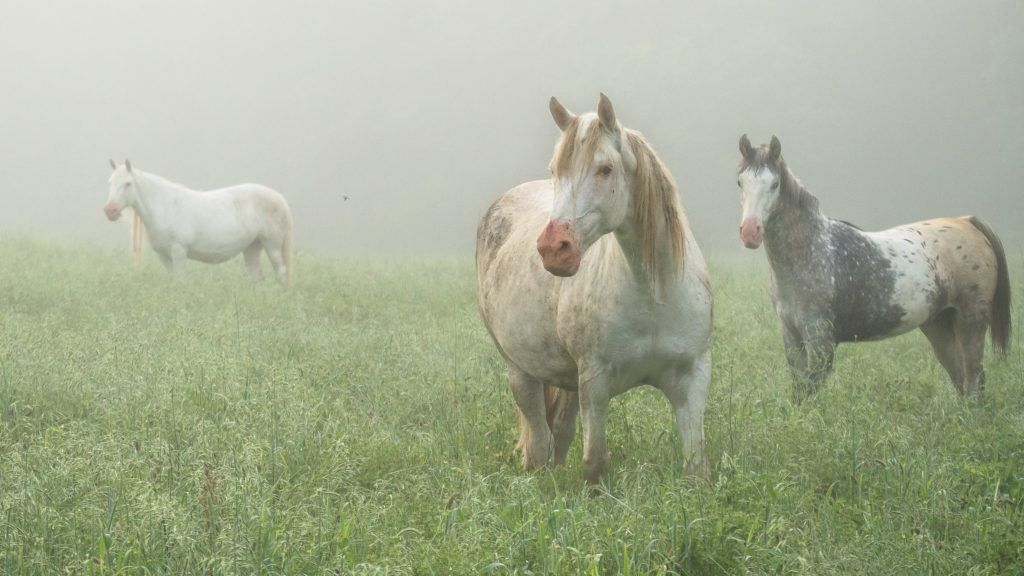
Listen carefully for sounds of the horses. Sometimes you’ll hear them before you see them. Photograph by Jenn Mishra
Just as important as where to photograph is when. Animals have patterns of behavior throughout the day and the year. It’s important to anticipate when the horses are generally most active and if they tend to move locations.
The wild horses near me are generally most active early in the morning and at dusk. This is true of other types of wildlife as well. I’ve arrived at a field on many a foggy morning when only a quiet snort from the mists let me know the wild horses were there. I waited for some of the fog to burn off and the horses appeared. During the heat of the summer, the horses move into the cooler woods and they are more difficult to find.
Also, pay attention to the growth patterns of the fields themselves. At times during the year, the grasses in the fields that I photograph are high and almost completely obscure the horses. Stop and listen. The horses may be in the field but hidden. It’s difficult to get photos of the horses in high grass.
Recommended Reading: Want a simple way to learn and master photography on the go? Grab our set of 44 printable Snap Cards for reference when you’re out shooting. They cover camera settings, camera techniques, and so much more. Check it out here.
Camera Settings
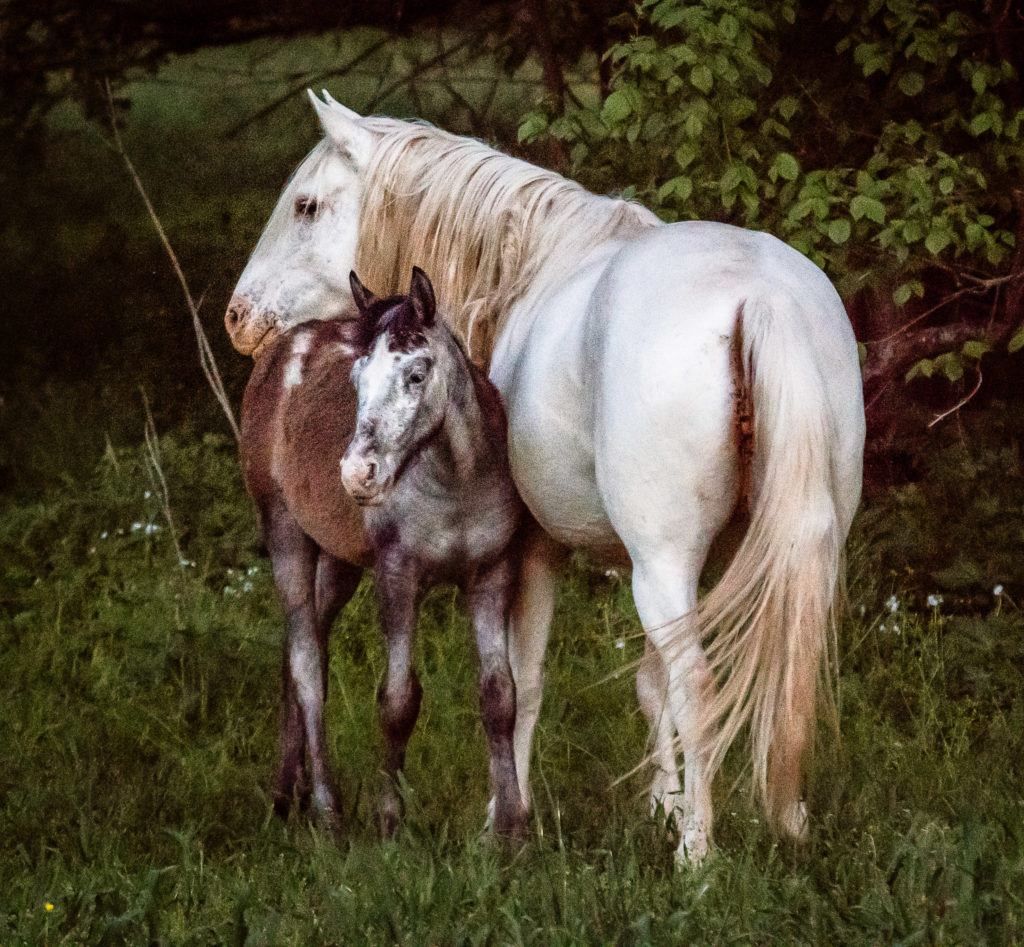
At dusk, I raise my ISO. This image was taken at f/5.6 and ISO 8000 to let in as much light as possible while still allowing for a fast shutter speed. Photograph by Jenn Mishra
Shutter speed is very important for freezing motion. Set your camera to take bursts of images at 1/1000th of a second. If the horses are very active and if you have enough light, you may increase the shutter speed. As the light fades, gradually slow your shutter speed to 1/500th of a second. I rarely go slower than this as motion will start to blur.
Set your aperture to f/8.0 or f/11 depending on how much light you have. As the light fades, you may have to open your aperture further to f/4.0 or, if your lens allows, f/2.8. Remember that this will decrease the depth of field. This helps you separate the horses from their background, but it’s also easier to miss focus. I use continuous auto-focus and my camera is set up for back button focus.
There are various opinions on ISO settings. My camera has good ISO performance, so I use auto-ISO with the maximum set to 5000. On a sunny day, my camera will select ISO 100, but as the light fades, the ISO will increase. I get more noise in my images, but I can clean most of that up in post-processing. I want to keep my shutter speed as fast as I can for as long as I can.
You won’t be able to use flash. It’s likely the light will not extend far enough, and the flash will scare the horses.
Key Lesson: Start with the following camera settings and adjust to the light available: f8.0 @ 1/1000th of a second.
Anticipating Behavior
If you watch wild horses for a while, you’ll notice that there are patterns of behavior. The best wildlife photographers get the shot because they can anticipate what the animals might do next.
The wild horses I photograph spend a great deal of time eating. I have hundreds upon hundreds of photos of horses grazing with their heads down in the grass. This is authentic behavior for the horses, but it’s not very exciting. Most people who visit the horses for a short time will see only this behavior.
The best wildlife photographers get the shot because they can anticipate what the animals might do next.
The best wildlife images show behaviors that are less common and have more action. Look especially for interactions between the animals.
Just like with portrait and street photography, eye contact is desirable. Wait for opportunities to photograph the horses looking directly at you. When I first enter a field, some or all of the horses will look up to assess whether I am a danger or not. I usually enter the field with my camera ready. I can take a few establishing shots from this distance.
Key Lesson: Look for action shots and eye contact with the horses.
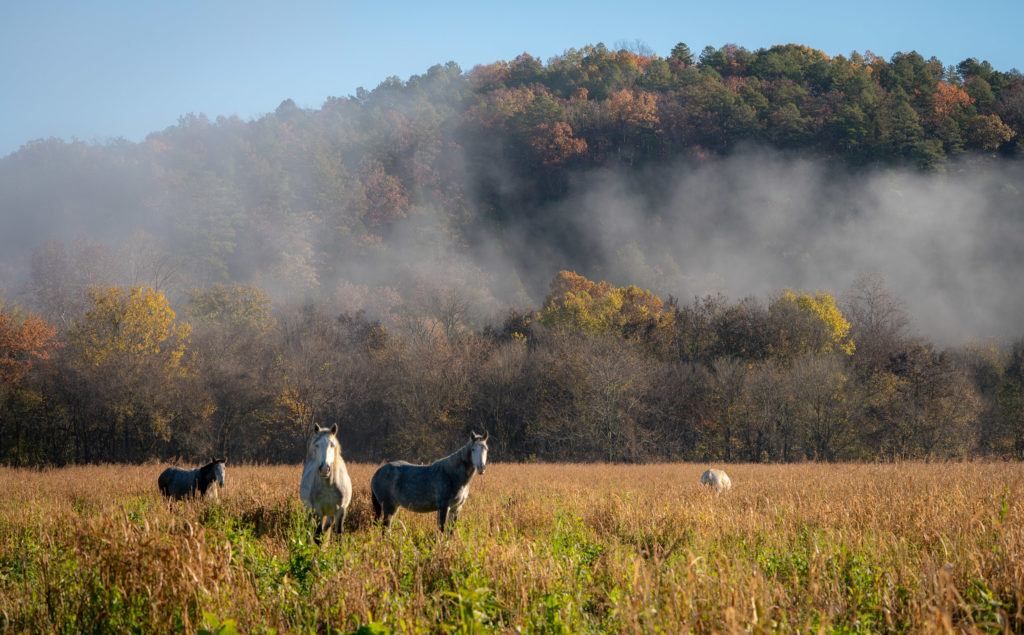
When I first enter the field, some of the horses look up from their grazing to see if I’m a threat. Photograph by Jenn Mishra
Over the next hour or two, I’ll slowly work my way closer to the herd. I want to move carefully and slowly. I don’t want the horses to become frightened and bolt. When I’m close enough for my telephoto lens to get good images, I stop and wait for the horses to forget that I’m there.

I waited a long while to see the horses play like this. Patience is everything when photographing wildlife. Photograph by Jenn Mishra
To get this image, I spent two hours slowly working my way closer to the herd. Then I waited. Most of the time, the horses were eating. But for about two minutes of the two hours, the horses played and fought. My patience was rewarded.
It is important to be patient and be ready with your camera. As you become more familiar with the horses, you’ll be better able to anticipate what they might do next.
Variety

Try isolating one horse or a small group of horses. I used a shallow depth of field to separate the horses from one another. Photograph by Jenn Mishra
Look for variety in your images. When photographing a herd of animals, look for opportunities to isolate one animal or small groups. I often think of the “rule of odds” when I’m framing a composition. This “rule” states that the best compositions have an odd number of subjects: 1, 3, 5, etc.
The herds I photograph usually consist of about 10-15 animals. Take some establishing shots of the entire herd. Then look for opportunities to focus on smaller groups.
Look for separation between the animals so they don’t merge into one. Pay attention to animals behind and obscured by the ones that you are photographing. It looks odd for a horse to have two tails or five legs. You may have to wait for animals to move around to get a clean shot.
Key Lesson: Focus on photographing one horse or a small group of horses.
Recommended Reading: Want a simple way to learn and master photography on the go? Grab our set of 44 printable Snap Cards for reference when you’re out shooting. They cover camera settings, camera techniques, and so much more. Check it out here.
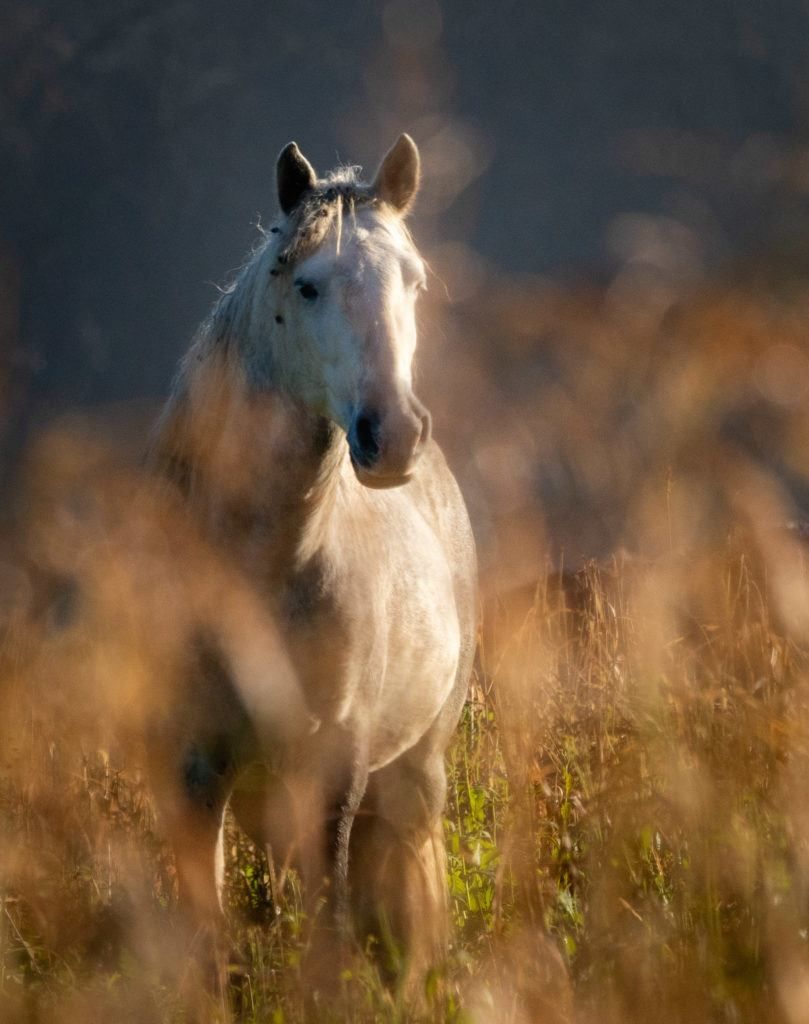
Try to isolate one horse for a portrait. I was shooting through tall grass. An aperture of f/8.0 allowed me to blur the grass between me and the horse. Photograph by Jenn Mishra
As with other forms of photography, light is essential. Look at how the light is in the scene and where the shadows fall. You can photograph the horses in silhouette or full sun, but some of the best images come when the light slants into the scene. As the horses move around, watch how the light interacts with their form.
Also, try focusing on the details of one horse and make a horse portrait.
Final Thoughts
The wild horses in the Ozarks remind us of a time when Missouri was once a frontier to the west.
Today, tourist attractions are often pricey, micro-managed experiences. Setting off to find and photograph wild horses is an authentic wilderness experience. You may spend an entire day looking for wild horses and not see one, but it’s this uncertainty that makes finding the wild horses that much more sweet.
Seeing the wild horses isn’t an experience to order, it’s an experience you have to find yourself.
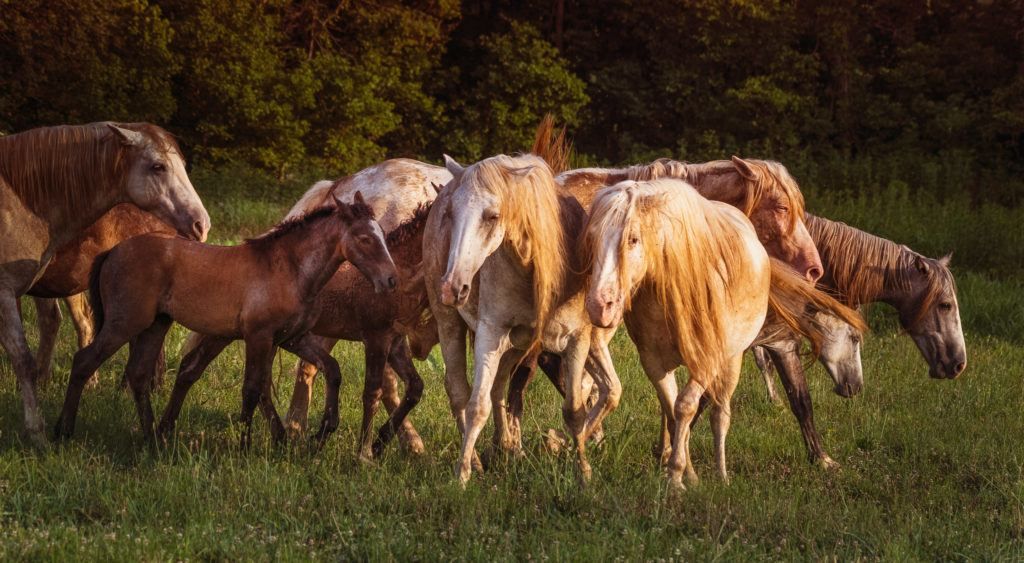
Photograph by Jenn Mishra
Self-Check Quiz:
- Name at least three places where wild horses may be found.
- Why should you never position yourself in the middle of a herd of wild horses?
- What are two characteristics of a good wildlife camera?
- Why are fast SD cards essential for wildlife photography?
- What types of behavior might you expect from wild horses?
- How can you get variety in your photographs of wild horses?
- What does a teleconverter do?
- What is the benefit of having a local guide?
- Why might you set your camera to auto ISO?
- What is the difference between a wild and a feral horse?
Assignment:
- Practice setting up your camera and camera equipment for shooting wild horses. Use a tripod or monopod and the longest telephoto lens you have. Using what you have learned in this guide, set up your camera.
- Go to a local park or lake and practice photographing moving subjects. The subjects can be squirrels, ducks, or a family pet.
- Practice until you can reliably find and track focus as the animal moves. Try to anticipate their behaviors.


